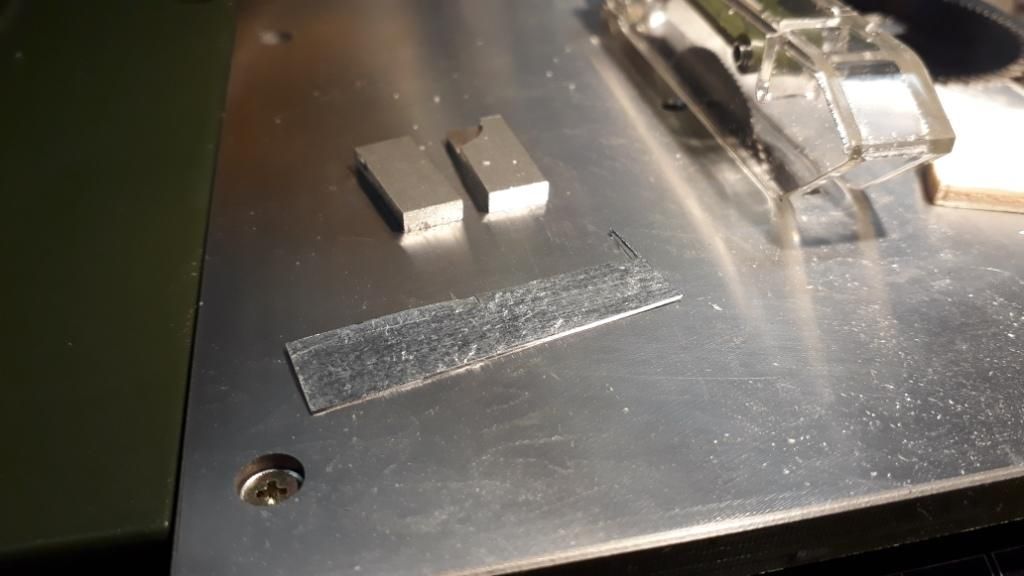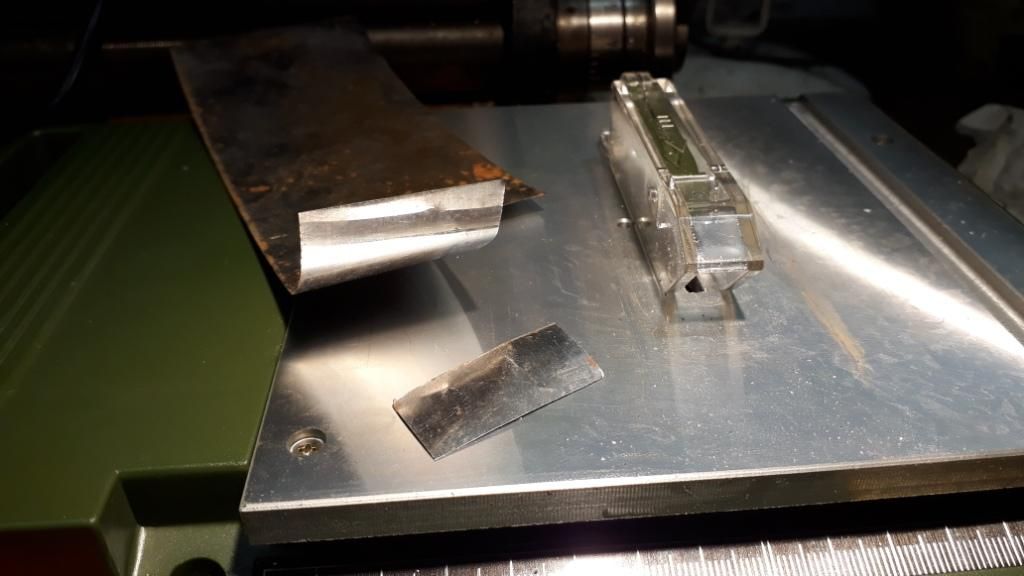On
9 May 2021 at 06:50 Roger B Said:
I got the new blades and tried them to make a couple of pieces I needed. One was a 25mm square from 0.5mm steel as a shim to go under the toolpost on my FD150 and the other was an 8mm wide strip of 0.3mm phosphor bronze for part of the injection pump on my twin cylinder engine.
Both cut easily and were true to better than 0.1mm. There was a small burr but both remained flat. The videos are here:

As a newby to the forum, I just wanted to add my voice of thanks to everyone who’s replied and commented constructively here. I had much the same question as the original posted by @johnsmith47, that is, are there any small bench or table saws available that will cut a range of materials including thin/light ferrous stock. I’m principally an electronics person, and my original need was /is for a small machine that’ll mainly be used to cut aluminium panels, plastic sheet and epoxy glass-fibre printed circuit boards. However, I’ve also recently also had some need to cut small pieces of thin (circa 1mm) steel sheet. After many hours of Googling I’ve come to the same conclusion as the apparent consensus here, that is, there’s very few options. Small light-duty machines like the Proxxon KS230 and FET are said to be unsuitable for ferrous materials, and there seems to be little if anything available of a slightly larger/heavier class without going all the way to comparatively huge machines with 200-300mm blade diameter, way bigger than I need and frankly even a bit scary for the small jobs I have in mind! I am therefore especially grateful to @rogerb61624 for posting the above videos and notes, which confirm my original suspicions that although Proxxon deprecate the cutting of ferrous materials on their table saws, the machines are nevertheless quite capable of cutting light steel sheet if used with care and the right blade. I’ve finally taken the plunge and ordered the FET model. Given RogerB’s generally positive experience with the KS230 (and its 85 watt motor) I’m hopeful the 200 watt FET motor will cope better still, and will give me enough torque to cope with occasional ferrous work. I’ll report back when it’s all arrived… …meanwhile thanks all, for providing all this useful debate and discussion.
 Michael Gilligan.
Michael Gilligan.









